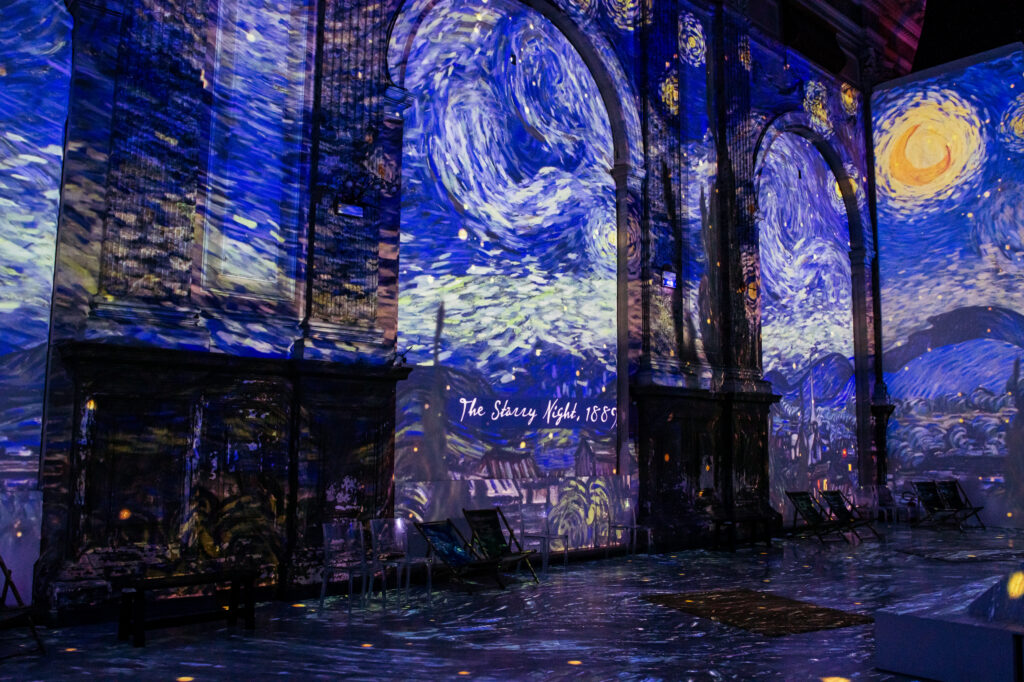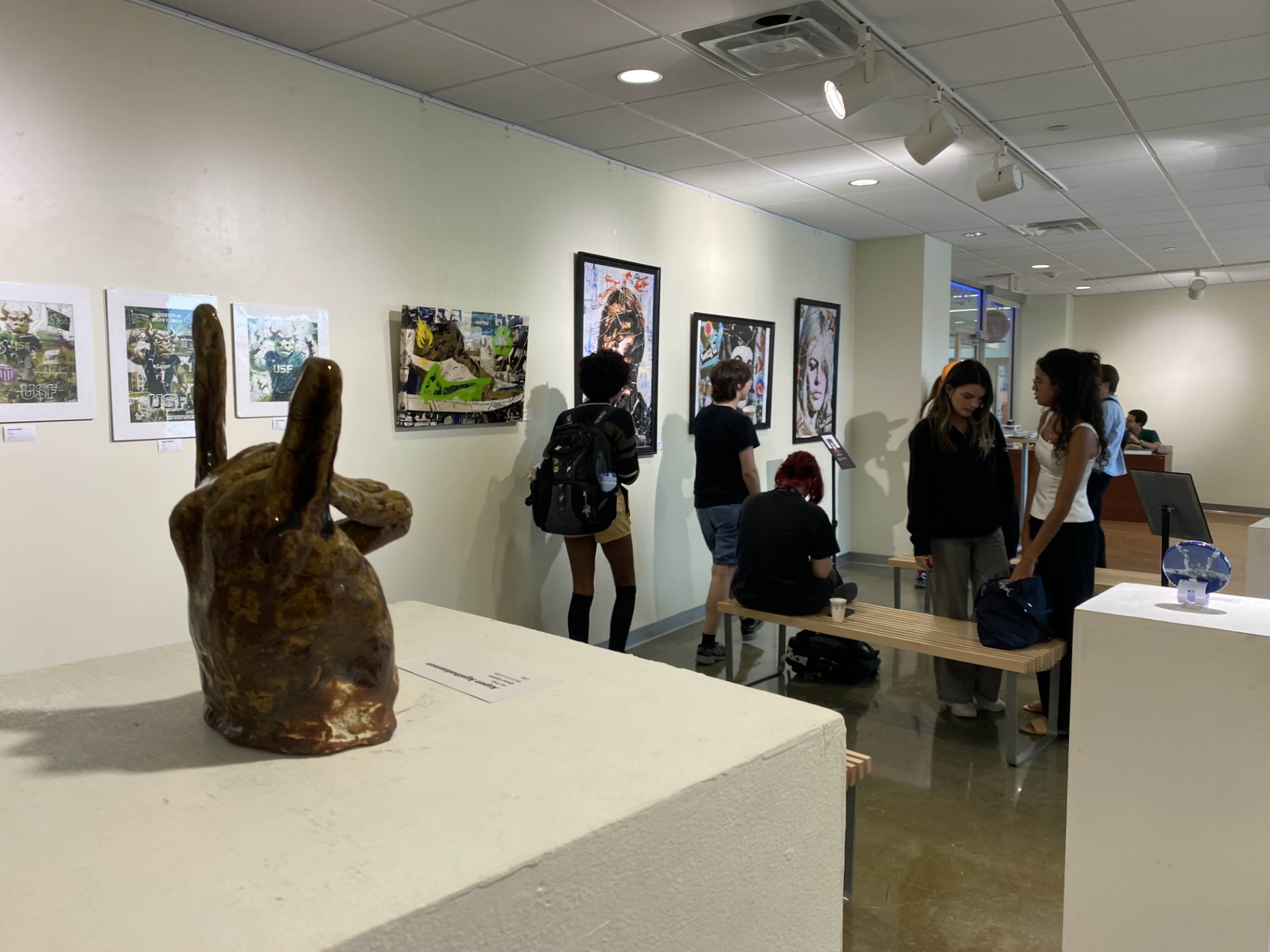By Delaney Taber
When “Van Gogh: The Immersive Experience” opened in Tampa at 4636 N. Dale Mabry, its high-tech approach drew in younger audiences, offering an experience that felt tailor-made for the social media era.
Crowds of students, families and art lovers poured in to see the Dutch painter’s work in a new way. Instead of quiet galleries and framed canvases, the exhibition surrounded visitors with floor-to-ceiling projections, interactive displays and virtual reality headsets that let them step inside Vincent Van Gogh’s paintings.
John Zaller, the executive producer of Exhibition Hub, a Brussels-based company that specializes in immersive events and has staged Van Gogh experiences in cities around the world, explained the thinking behind the high-tech approach.
“By creating this more complete context and using the technology to bring Van Gogh’s artworks to life, we are appealing to a younger audience who is used to having more technology around,” Zaller said.
Zaller notes that this approach not only draws in younger visitors but also changes the way people engage with Van Gogh’s art, adding layers of interpretation beyond what a traditional museum setting offers.
“Often in a museum you find a fixed object with limited interpretation,” he said. “Our displays are different in that we create a lot of context for a visitor and we use technological overlay to make these works come to life in a way that isn’t always immediately apparent by looking at the object in and of itself.”
That approach resonates with students like Katelynn Waters, a student at the University of South Florida, who said the exhibition made Van Gogh feel more accessible.
“Instead of just studying Van Gogh in a textbook or looking at his painting through a computer, I felt like I was stepping into his world,” Waters said.
Waters said that the projections and immersive aspects of the exhibition helped her understand Van Gogh’s work in a way that felt more personal than traditional classroom
learning.
She recounted that one of most memorable moments came when visitors were invited to step directly into the painting “The Bedroom.”
“You walk up and are suddenly inside a bedroom from his paintings,” she said. “You can sit on the chair or the bed. You can grab the things off the table. It’s pretty neat.”
Waters also described standing amid the projection of “Starry Night” and the sense of
connection it gave her to the artist’s emotions and creative process. The digital display used layered motion graphics and ambient sound to animate Van Gogh’s sky.
“It’s almost like I could actually feel the movement in the sky and the emotion behind the brushstrokes,” she said.
For her, the exhibition offered both an educational and social experience. She attended with a group of friends and said the interactive displays and photo opportunities made the visit feel less like a museum trip and more like a shared adventure.
Sheramy Bundrick, professor of art history at USF and author of “Sunflowers: A Novel of Vincent Van Gogh,” agrees that the exhibition is a powerful way to engage young audiences.
Bundrick was first captivated by Van Gogh’s art during her fellowship at The Metropolitan Museum of Art, an experience that sparked her enduring interest in the painter’s life and work.
“I think the accessibility of his work in all kinds of ways,” Bundrick said. “Both the literal being able to access it very quickly, but also how accessible his story is and how accessible the art is. Everyone can look at something and see something beautiful in his work. I think these are all things that explain the appeal of these traveling exhibits, which is really exciting.”
Bundrick said that while some art historians might be skeptical of high-tech displays, she sees them differently. For her, the immersive format opens doors for people who might never have te chance to travel and see Van Gogh’s originals in person.
“You kind of expect that maybe someone like me would be a little snobby about it, but not at all, because I think it offers an exciting gateway,” said Bundrick.
Bundrick noted that Van Gogh himself was deeply invested in connection. Not only with other artists, but with ordinary people.
“His desire to connect with people carried over into his art, and he saw his art as a way to reach them,” Bundrick said. “That comes out very clearly in his own writings and in the subjects he chose. He wanted to paint things people would understand.”
Bundrick sees that same desire for connection in Van Gogh’s work as part of what makes
immersive exhibitions so meaningful today.
“I think he would love it that college students have his posters on their dorm walls,” Bundrick said. “The idea of an ordinary person being able to connect with his art and see something special in it, and feel connected to him in some way. I think he’d love that.”
The exhibition remained open until Oct. 31.




